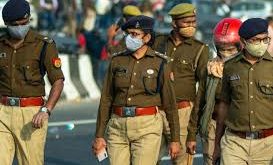Due to lack of awareness about RTO rules on tinted car windows, there is often confusion and confrontation in such cases
There are dozens of traffic rules and many of them vary from state to state. The confusion also increases since these rules may be amended by decisions taken by the government or court orders. One area that is often debated is the use of tinted car windows. Let us find out if tinted car windows are really illegal in India.
Are tinted car windows illegal?
Traffic police often carry out special drives to detect and fine people using tinted car windows. If there is a tinted film, it is removed, along with imposing a fine. The rationale for not allowing tinted car windows is to prevent criminal activities that may be happening inside the car. Tinted car windows are also considered unsafe since they reduce visibility at night or in adverse weather conditions.
When tinted car windows can be legal?
As per a 2012 Supreme Court ruling, all types of aftermarket sun films or tints on car windows are banned. This even applies to aftermarket products that meet Visible Light Transmission (VLT) standards. But if the tinted car windows are installed by the OEM and they meet VLT standards, they are considered legal.
As per the VLT rule, the front and rear windshield of the car should have 70% VLT. It means that the front and rear windscreen should allow 70% of the light to pass through. Similarly, car windows should have at least 50% VLT. OEM installed tinted glass that meets VLT rules come with the necessary certificate and stickering. These could be presented to the traffic personnel in case of any argument.
What about in-built sunshades, removable sunshades and curtains?
Keeping in mind the adverse weather conditions, sunshades can be offered as an accessory. Sunshades can be installed in the car door, allowing users to pull it up or down, as needed. Sunshades with zip mechanism are also available, which can be installed and removed according to requirement. Curtains are another option that people use.
The confusion arises because anything installed by the OEM is considered legal. Since OEM-installed parts and components are already checked and approved before issuing the road worthy certificate. However, the rules also state that anything that blocks the light passing and does not meet VLT standards is essentially illegal.
Many times, even the traffic personnel may not be fully aware of such conflicting laws. As a result, arguments can occur. How these rules really work is that while OEM-installed sunshades are legal, they can only be used when the car is parked. When driving, even OEM-installed sunshades need to be rolled down or removed (in case of removable units). People are not aware of such rules, which leads to arguments.
Conclusion
It is clear from above that only OEM-installed tinted glass that meets VLT standards is legal. All aftermarket tinted glass and films are essentially banned, even if they meet VLT standards. This is as per the Supreme Court order. And for sunshades and curtains, these can only be used when the car is parked.
However, there can be some exceptions, depending on the state. For example, the Kerala High Court in 2021 had allowed use of aftermarket tinted glass and films that meet VLT standards. However, this order does not overrule the 2012 Supreme Court order and the national law remains unchanged.
 Newspatrolling.com News cum Content Syndication Portal Online
Newspatrolling.com News cum Content Syndication Portal Online






